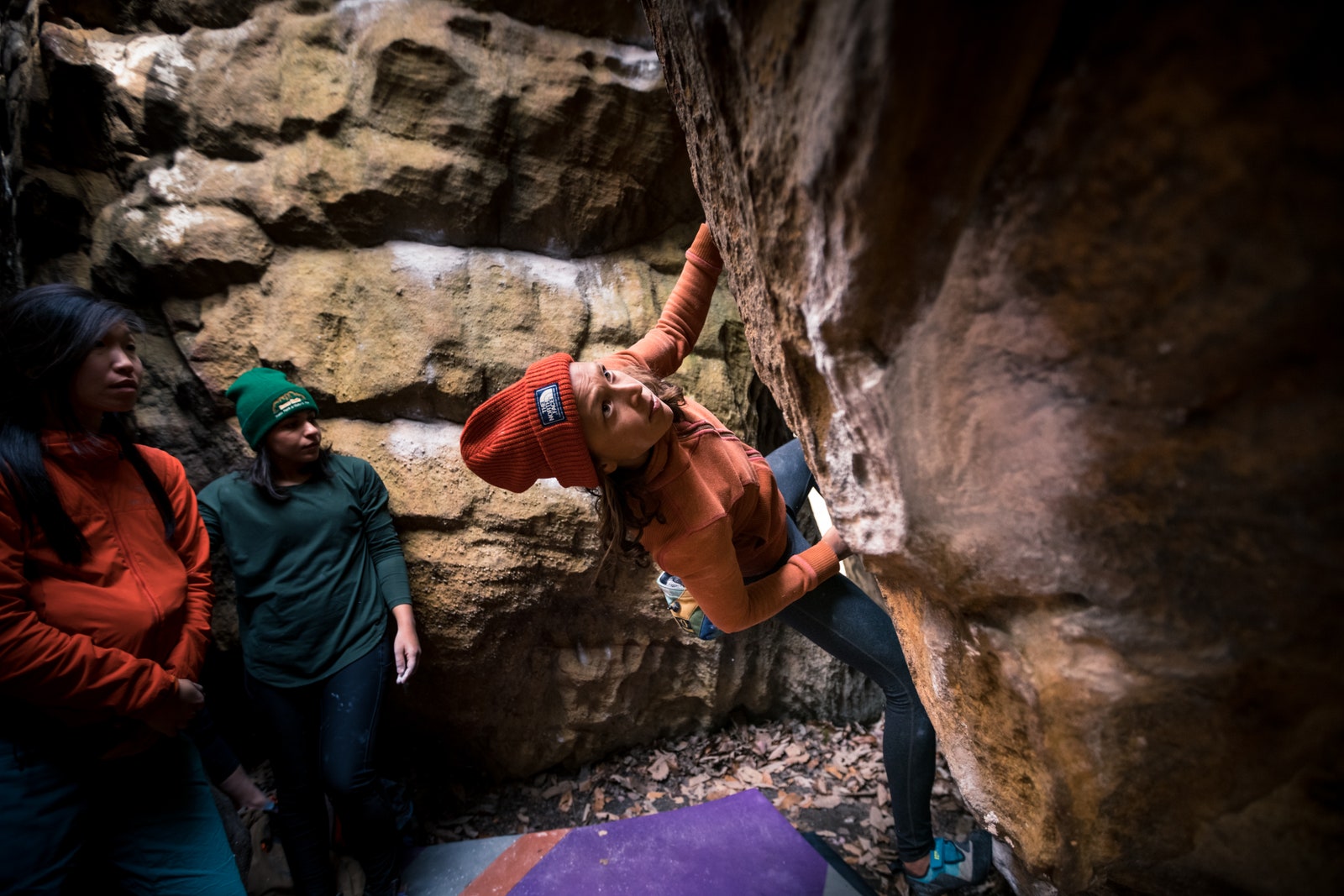If you’re really into the nitty gritty of climbing, the mountain guide comes highly recommended as a sort of compendium of best practices, with sections on how to perform basic first aid, how to snow climb, and more.
Climbers in Stone Fort during the 2017 Flash Foxy Women’s Climbing Festival in Chattanooga, Tennessee.
Vikki Glinskii
Where to climb
To find places to climb in your area, or in an area you may soon be road tripping to, mountainproject.com, the Crag, and 8a.nu are great resources for routes. All are crowdsourced websites, with detailed posts and photos from climbers who have visited before you. Guidebooks can be handy, too, though first-person experience is often your best bet. If you don’t have friends already well-versed in climbing, groups like Brown Girls Climb, Never Stop Moving, and Flash Foxy exist to help women tap into the community and meet people to climb with. Additionally, guided climbing trips planned by places like Fox Mountain Guides and Alpine Ascents ensure a safe experience.
Ratings
Of all the terminology thrown around amongst climbers—beta (strategy), setters (gym employees who reset wall routes)—the rating systems are perhaps the most immediately useful to know. In the U.S., bouldering routes are ranked using the V scale, starting at V0 and going up to V16, getting harder as the number increases. Ratings, however, can shift: The first person who climbs a route gets to grade it, though as more people climb it (and post their opinions about it on the internet), it may change.
Rope climbing (again, in the U.S.) follows the YDS scale, with technical climbs rated from 5.0 to 5.15, with 5.1 to 5.4 being classified as ‘easy’. REI offers a more in-depth guide to ratings here.
Overcoming nerves
If all this seems overwhelming, start small: Head to a nearby climbing gym, where you’re bound to meet people who can help out. “Just give it a go; usually people are very friendly and helpful,” Twyford says. Also, knowing your initial limitations is helpful. “It’s easy to be intimidated when you go and see lots of really strong people doing these really cool things,” Monnett says. “If you’re having trouble with something, you can always ask someone and someone will help you.”
Also, have patience: “It took me probably three to six months to feel like I really got the hang of it, before I knew the technique and I didn’t have to think about every climbing move to do it right,” Monnett says. “But if you keep climbing, you’ll start seeing progress quickly, and it’s a lot of fun.”


